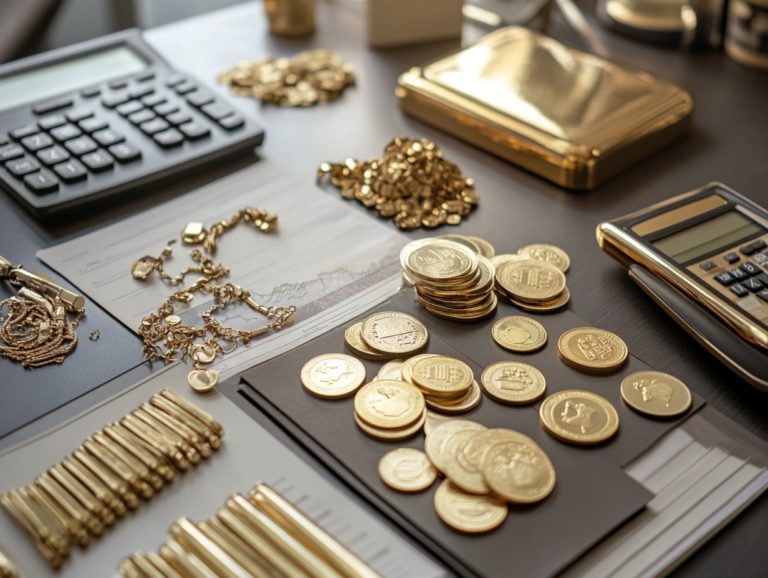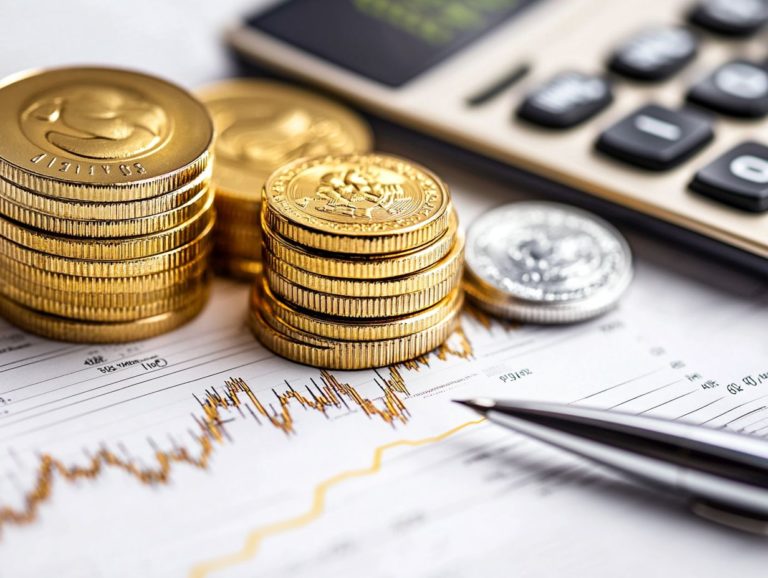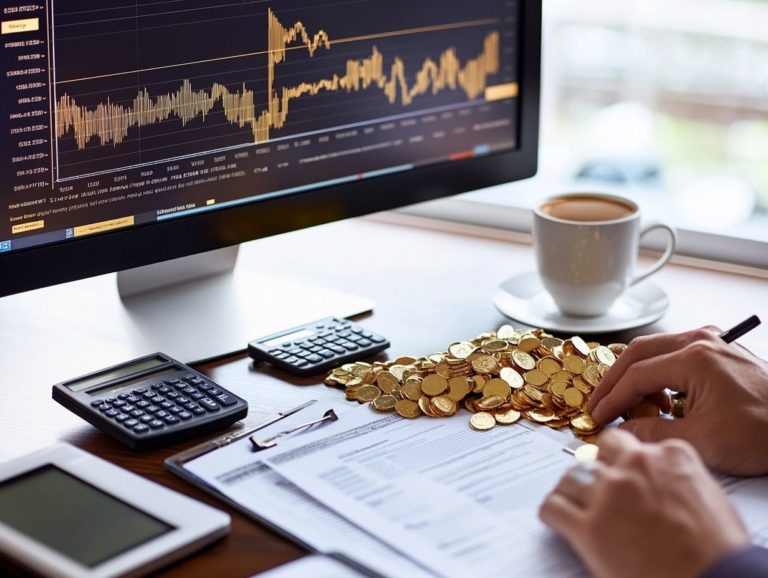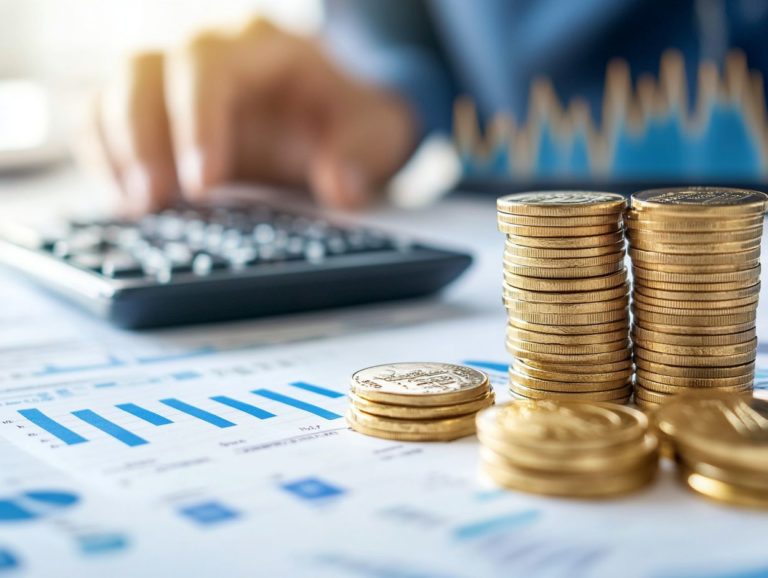Tax Compliance for Individual Precious Metals Investors
Buying precious metals can be exciting but also complicated, especially with taxes. Knowing the different types, like gold coins or gold ETFs, can seriously affect your finances.
This article explores the tax rules for metals such as gold, silver, platinum, and palladium. You ll find strategies to lower your tax burden, learn about common mistakes to avoid, and access resources to stay informed.
Join us as we uncover the key aspects of tax compliance for individual precious metals investors.
Contents
- Key Takeaways:
- Types of Precious Metals Investments
- Tax Implications for Different Types of Precious Metals
- Reporting Requirements for Precious Metals Investments
- Strategies for Reducing Taxes on Precious Metals Investments
- Common Tax Mistakes to Avoid
- Resources for Staying Informed on Tax Compliance
- Frequently Asked Questions
- How are precious metals taxed for individual investors?
- Do I need to report my precious metals investments on my tax return?
- What if I receive precious metals as a gift or inheritance?
- Are there any tax benefits to holding precious metals in a retirement account?
- What happens if I don’t report my precious metals investments on my taxes?
- Are there any tax deductions available for losses on precious metals investments?
Key Takeaways:
- Be aware of tax rules to avoid penalties.
- Know that different metals have different tax rules.
- Use strategies like tax-loss harvesting to lower your taxes.
Why Tax Compliance is Important
It’s crucial to follow tax rules when you buy metals like gold or silver. This applies to both individuals and businesses.
Understanding tax implications helps you make smart decisions about profits and losses from selling your investments. This can secure your financial future and help you avoid penalties. For more detailed insights, consider understanding the tax effects of precious metals trading. Accurate reporting is particularly important for inflation hedges like gold and silver.
Navigating the rules from the tax authority in the United States can feel overwhelming, especially when it comes to classifying precious metals and understanding their tax treatment. Many investors find it helpful to work with tax professionals who can offer tailored advice.
Ignoring tax obligations can lead to serious consequences, like significant fines and legal issues. Stay informed and seek professional help to protect your investments and maximize returns.
Types of Precious Metals Investments
When you invest in precious metals, you have a variety of choices. This includes tangible assets like gold and silver coins, as well as paper investments such as ETFs funds that let you invest in a mix of assets without holding them directly and mining stocks.
Each type has its own advantages and risks, allowing you to customize your strategy based on your financial goals.
Physical vs. Paper Investments
Physical investments, like gold and silver bullion, give you tangible assets. On the other hand, paper investments offer the convenience and liquidity that many investors prefer.
These features can greatly influence your investment strategies, depending on your personal circumstances and financial aspirations. If security and a hedge against inflation are priorities, physical assets may be especially appealing since they often retain intrinsic value.
If you prefer quick access to cash and want the flexibility to act on market opportunities, paper investments might be a better fit.
Both choices have risks. Physical assets require proper storage and insurance, while paper investments can be subject to market fluctuations. By carefully weighing these factors, you can make informed decisions on building a portfolio that aligns with your long-term financial goals.
Tax Implications for Different Types of Precious Metals
Understanding the tax implications of various precious metals investments is essential for optimizing your financial outcomes. These implications can significantly affect your capital gains tax obligations, especially based on how long you hold your investments.
Gold, Silver, Platinum, and Palladium
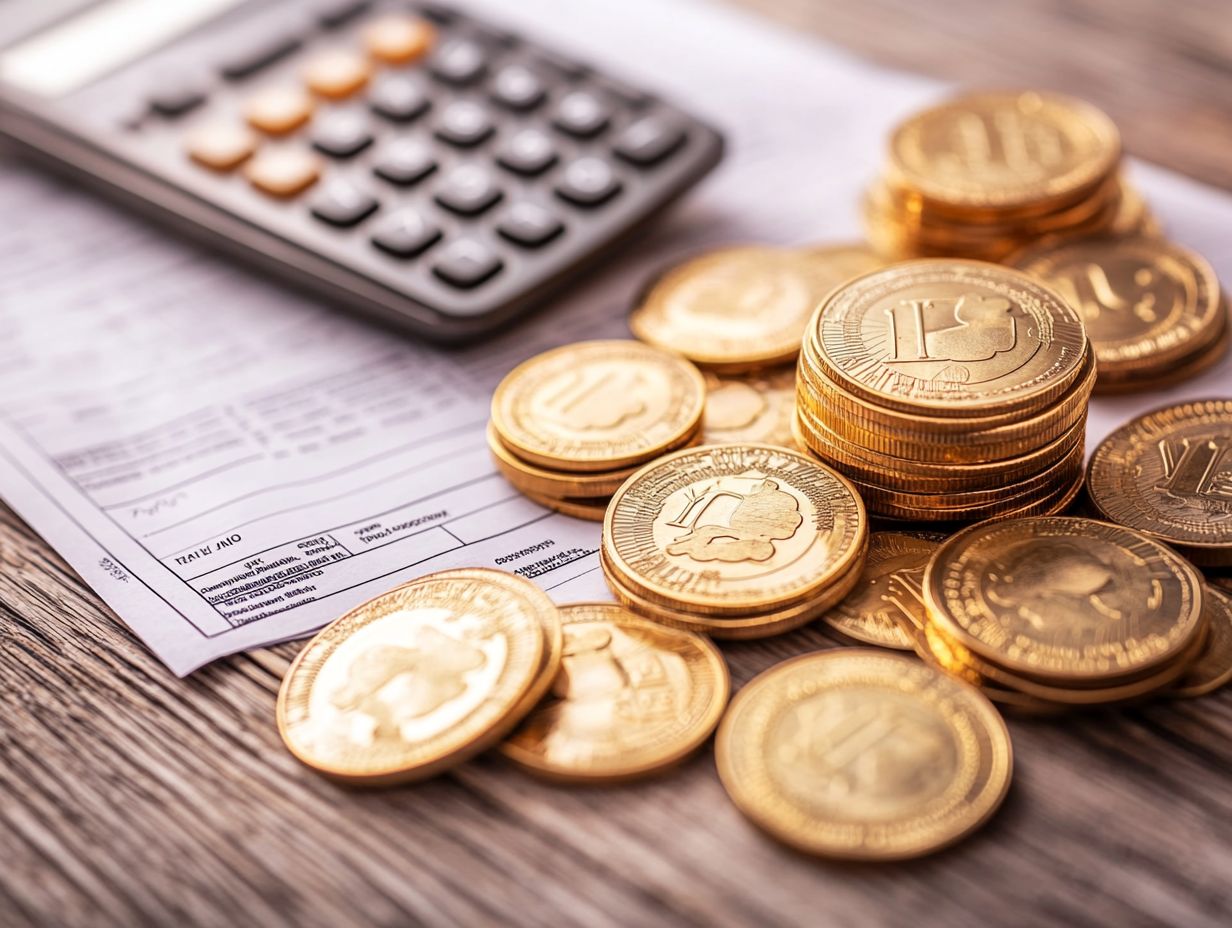
Investments in gold, silver, platinum, and palladium come with unique tax implications. Gold is often seen as a hedge against inflation, while silver s industrial applications can influence capital gains tax scenarios.
These precious metals serve not only as physical assets that enhance your investment portfolio but also exhibit varying degrees of market volatility and liquidity. You might notice that while gold tends to maintain stability, platinum and palladium can experience significant fluctuations driven by their specialized industrial demand, particularly in the automotive sector for catalytic converters.
Grasping these subtleties is essential. They affect not only your immediate investment choices but also your long-term financial strategies.
This is especially relevant when considering the potential tax advantages that can emerge from holding these metals during periods of economic uncertainty.
Reporting Requirements for Precious Metals Investments
Adhering to reporting requirements for precious metals investments is essential for maintaining tax compliance. You must be attentive to specific IRS forms, such as Form 1099-B and Schedule D, to ensure you accurately report your capital gains and losses.
This care not only safeguards your investment but also aligns you with regulatory expectations.
IRS Forms and Deadlines
As an investor in precious metals, it s essential for you to be well-acquainted with key IRS forms like Form 8949 for reporting capital gains and losses and Form 8300 for cash transactions exceeding $10,000. This knowledge ensures that your tax reporting is timely and accurate.
You must also submit Form 1099-B for reporting proceeds from broker transactions, which is necessary if you have any sales. The deadlines for these forms generally align with the annual tax return dates, but they can vary depending on your entity type.
Timely submission of these forms is critical to avoid penalties, interest charges, and the possibility of audits.
By understanding these regulations, you can ensure compliance while maximizing your potential gains from your precious metal investments.
Strategies for Reducing Taxes on Precious Metals Investments
Using smart tax-reduction strategies can boost your profits!
Techniques like tax-loss harvesting can play a pivotal role in offsetting capital gains and minimizing your overall tax liabilities. This way, you keep more of your hard-earned profits.
Tax-Loss Harvesting and Other Tactics
Tax-loss harvesting is a strategic move that allows you to sell securities at a loss, offsetting your taxable gains. This is a particularly savvy tactic for precious metal investors aiming to lighten their tax burden.
By carefully timing the sale of underperforming assets, you can balance out the profits from your more successful investments in gold, silver, or other precious metals. This technique delivers immediate tax relief and opens up reinvestment opportunities without disrupting your overall investment strategy.
Incorporating methods like portfolio rebalancing, which means adjusting your asset mix to maintain desired risk levels, utilizing tax-deferred accounts, and exploring long-term capital gains strategies can significantly enhance your tax benefits. With an informed approach to tax-loss harvesting, you stand to gain considerable financial advantages, especially when navigating the ups and downs of volatile markets.
Common Tax Mistakes to Avoid
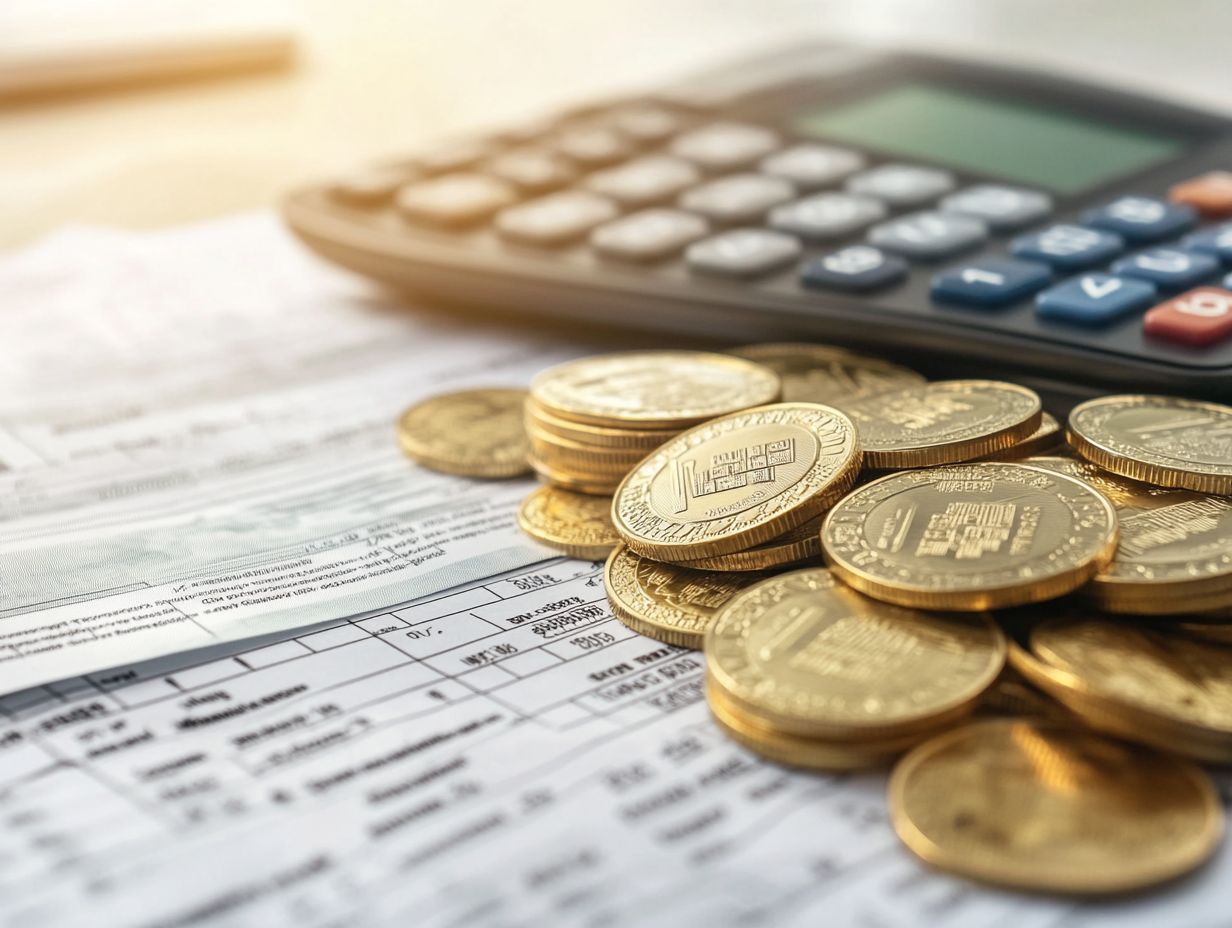
Avoiding common tax mistakes is essential for you as a precious metal investor. Maintaining compliance is key to steering clear of costly penalties.
Errors in reporting or a lack of understanding regarding capital gains tax can lead to significant financial repercussions that could easily be avoided.
Penalties and Consequences for Non-Compliance
Non-compliance with tax laws can lead to harsh penalties for precious metal investors. This may result in unsettling financial scenarios such as back taxes, fines, and even IRS audits.
These repercussions not only create immediate financial strain; they can also disrupt your long-term investment strategies and savings goals. Be vigilant, as neglecting your tax obligations can lead to significant financial penalties that may accumulate over time, jeopardizing your overall wealth.
To protect yourself from these risks, it’s vital to adopt proactive tax planning strategies. Stay informed about relevant regulations and consult with professionals to implement tax-efficient practices that safeguard your capital and enhance your investment portfolio. Understanding taxation for precious metals secured loans paves the way for greater financial stability.
Resources for Staying Informed on Tax Compliance
Staying informed about tax compliance is essential for precious metal investors. Valuable resources include insights from tax professionals, authoritative publications, and organizations like the National Association of Tax Professionals.
Utilizing these tools will help you understand tax laws with confidence and clarity.
Websites, Publications, and Professional Advisors
Numerous websites and publications offer valuable insights on tax compliance. Professional advisors provide tailored guidance to help you navigate the complexities of tax laws as a precious metal investor.
Resources like the IRS website are crucial for official updates on regulations. Industry-specific publications, such as the Journal of Accountancy, are essential for staying informed about relevant tax changes. Additionally, understanding the tax implications of importing and exporting precious metals can provide valuable context. Forums and communities focused on precious metals deliver real-world insights and shared experiences that are often hard to find elsewhere.
For personalized support, engage with certified tax professionals or financial advisors who specialize in precious metals. These experts illuminate the intricate tax implications you may face. They provide direction based on current laws and help you craft strategies to optimize your tax outcomes for your investments.
Frequently Asked Questions
Here are some important questions for precious metal investors, along with their answers:
How are precious metals taxed for individual investors?
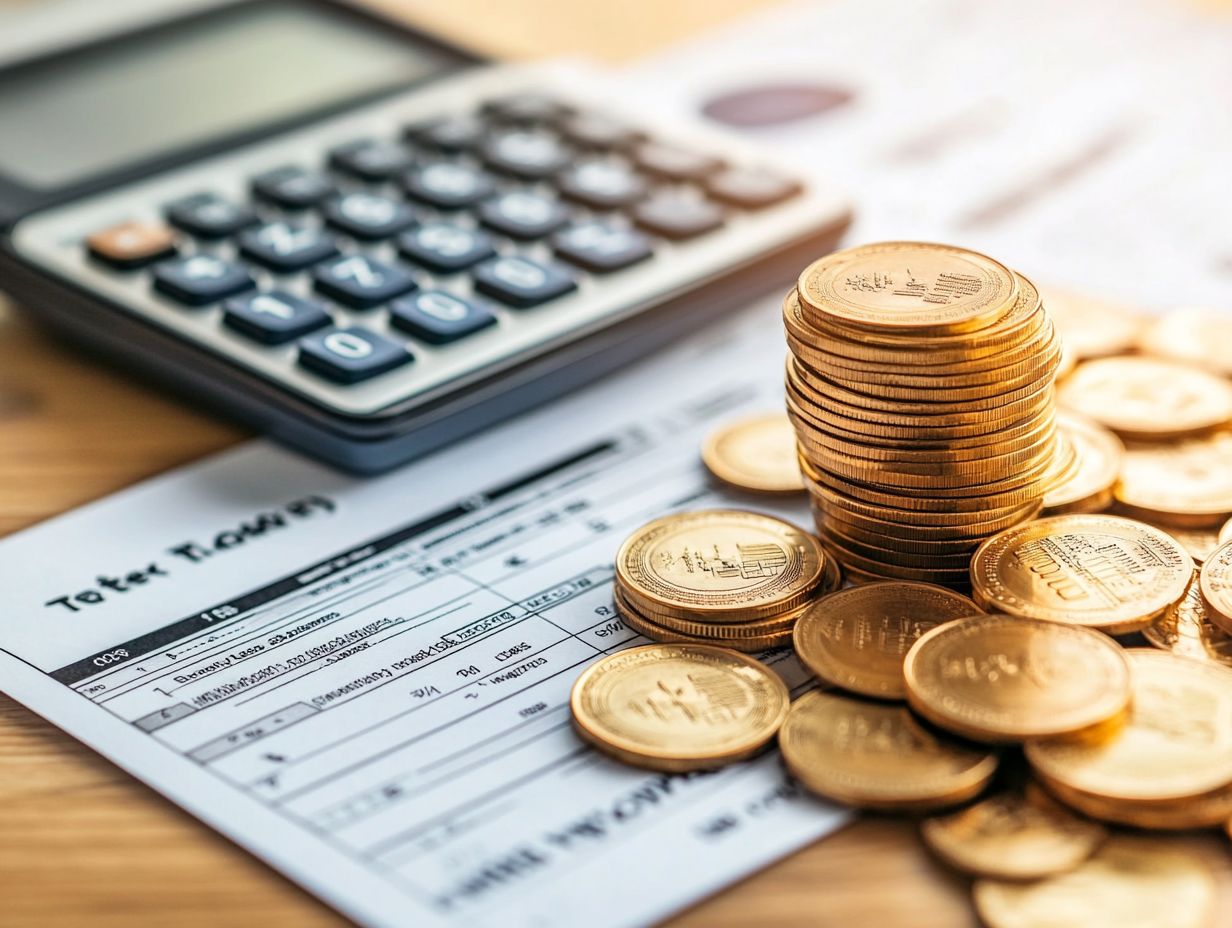
Precious metals are generally taxed as capital assets. This means any gains or losses from their sale are subject to capital gains tax, with the specific rate depending on the type of precious metal and how long it was held before being sold.
Do I need to report my precious metals investments on my tax return?
Yes, it’s necessary to report any gains or losses from selling precious metals on your tax return. You will need to use Form 8949 and Schedule D to report these transactions.
What if I receive precious metals as a gift or inheritance?
If you receive precious metals as a gift or inheritance, the cost basis for tax purposes will be the fair market value at the time you received them. When you sell the metals, report any gains or losses based on this adjusted cost basis.
Are there any tax benefits to holding precious metals in a retirement account?
Yes, holding precious metals in a retirement account can provide tax benefits. Traditional IRA and 401(k) plans allow you to defer taxes on contributions and any gains until you start taking distributions. Roth IRAs and Roth 401(k) plans allow for tax-free distributions, provided certain requirements are met.
What happens if I don’t report my precious metals investments on my taxes?
Failing to report your precious metals investments can result in penalties and interest charges from the IRS. Accurately report all income and gains on your tax return to avoid these consequences.
Are there any tax deductions available for losses on precious metals investments?
Unfortunately, losses on precious metals investments cannot be deducted on your taxes. They are considered personal investments and do not qualify for any tax deductions. However, you can use these losses to offset gains from other investments.










